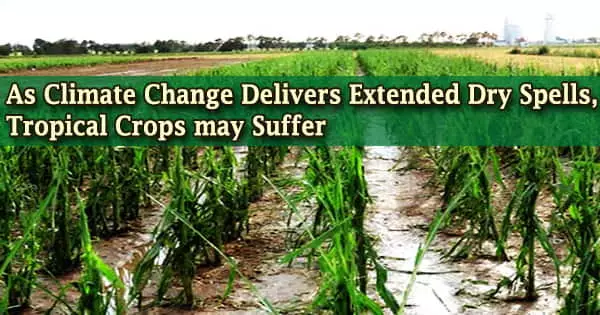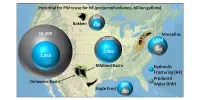Climate change may cause longer, hotter, and drier spells in regions throughout the world, threatening vital global crops over the next 50 years.
Climate change, according to a recent study done by the University of Reading, is causing prolonged dry spells in the dry season, which might harm crops cultivated during dry seasons in tropical nations, as the number of days without rain rises by 2070-2099.
Dry spells will endure 5-10 days longer on average in northeast South America and southwest Africa, according to the researchers, with lengthier periods of no rain in the Mediterranean, Australia, Central America, and South America, as well as broader southern Africa.
In places with high yearly rainfall during a wet season, such as the winter, dry farming may be conducted. Crops are cultivated during the next dry season, utilizing procedures that take use of the soil’s retained moisture. In the United States, dry farming is done for a range of crops in California, Colorado, Kansas, South Dakota, North Dakota, Montana, Nebraska, Oklahoma, Oregon, and Wyoming.
South America, southern Africa, and portions of Asia are predicted to witness a 7°C to 3°C increase in peak dry season temperatures compared to the rainy season, with certain sections of these regions having season average maximum temperatures of 35°C or higher.
The trend we see towards more intense dry seasons in the tropics has worrying implications for agriculture in these regions.
Dr. Caroline Wainwright
By the end of the century, the onset of wet seasons in the tropics is expected to be delayed by up to two weeks across South America, southern Africa, West Africa, and the Sahel, potentially affecting agricultural sowing.
Dryland farmers must regularly assess a crop’s potential yield during the growing season and be ready to reduce crop inputs such as fertilizer and weed control if it looks that the crop will have a low yield due to lack of rainfall. Farmers may boost their input efforts and budget in years when moisture is abundant to optimize yields and offset bad harvests.
Dr. Caroline Wainwright, an NCAS climate scientist at the University of Reading, said: “The trend we see towards more intense dry seasons in the tropics has worrying implications for agriculture in these regions.”
“Many of the nations we studied, such as South Africa, are already experiencing drought, so the idea of hotter and drier spells during a time of year when water is short is quite concerning.”
Agriculture is critical in many areas for feeding populations and generating revenue through food exports throughout the world. These findings add to the growing body of evidence that climate change will have an influence on how we live and how we die.
The new study, which was published in the Journal of Hydrometeorology, employed the most up-to-date computer models and better statistical approaches to forecasting future changes in rainfall patterns in the tropics during both the dry and rainy seasons. This is due to the fact that the impact of dry spells on crops varies depending on the season.
During dry seasons, temperature rises, the frequency of dry days increases, and the length of dry spells increases.
During the wet season, there were smaller fluctuations in the length of dry periods. During the dry season, however, the greater possibility of soil becoming too dry to sustain crops might harm perennial crops, which thrive all year.
As a result, climate change may have an impact on the production of popular foods like cocoa and coffee.
















